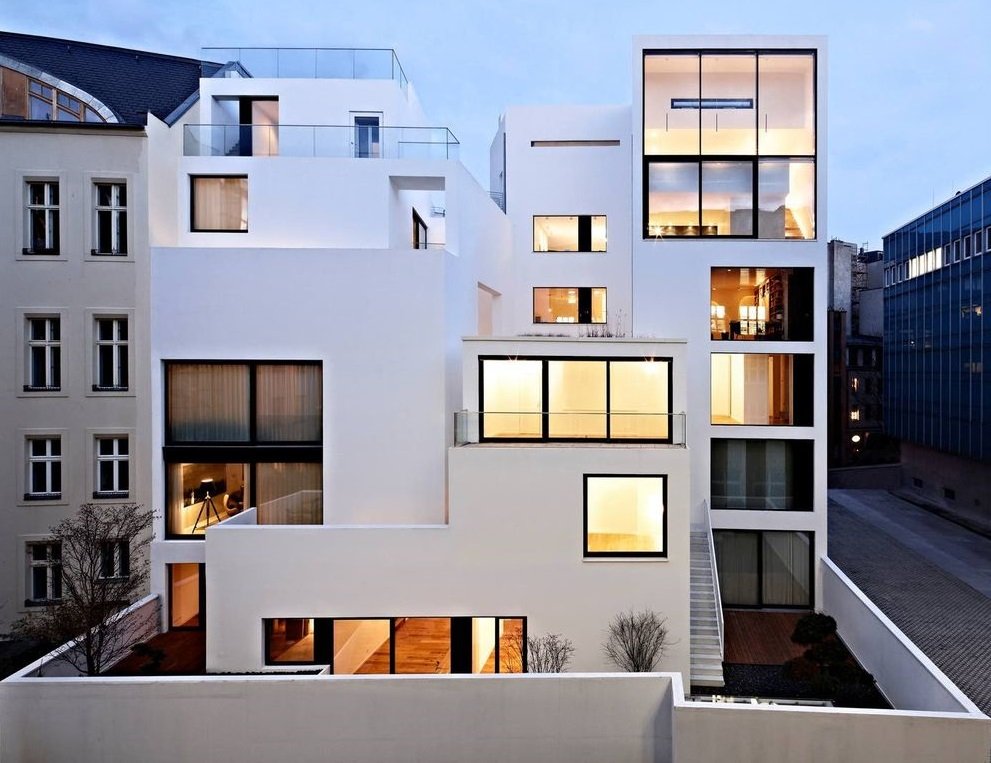#9393. White Cubist Facade: Minimalism and Light in Urban Environment
This modern residential complex is a striking example of minimalist architecture where the white facade becomes the dominant element of expressiveness. The building features a cubist composition with asymmetrically arranged window openings of various sizes and shapes, creating a dynamic rhythm across the snow-white surface.
Particularly appealing is the play with volumes — the facade is not flat but consists of several volumes offset from each other, creating an interesting spatial composition. Large glass surfaces contrast with solid white walls, allowing maximum natural light to enter the interior spaces and enabling the interiors to "shine through" to the outside, especially in the evening when interior lighting is turned on.
The architect skillfully integrated the building into the urban environment, creating a transition between traditional development (visible on the left) and modern architecture (on the right). Terraces and balconies with minimalist glass railings add functionality and expand the living space.
For private housing construction, this project offers several borrowable principles: the contrasting juxtaposition of window openings of different scales, playing with facade volumes to create depth, and the effective use of white color as a basis for expressive architectural composition. It's also important to note the relationship between solid surfaces and glazing — here, an ideal balance of privacy and openness has been achieved.
